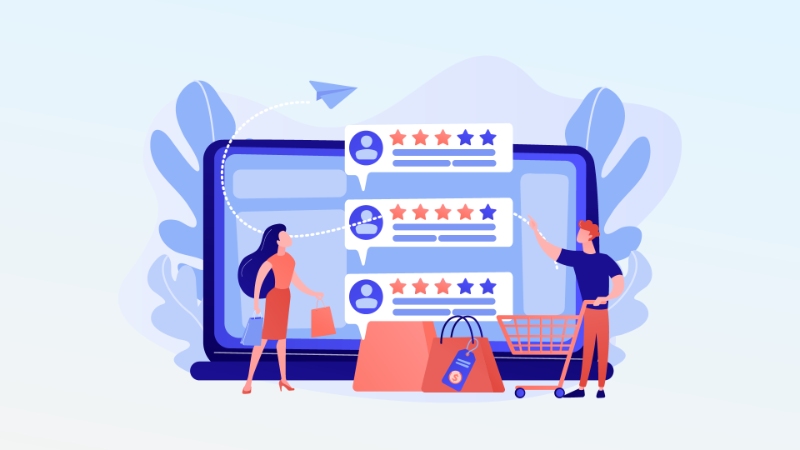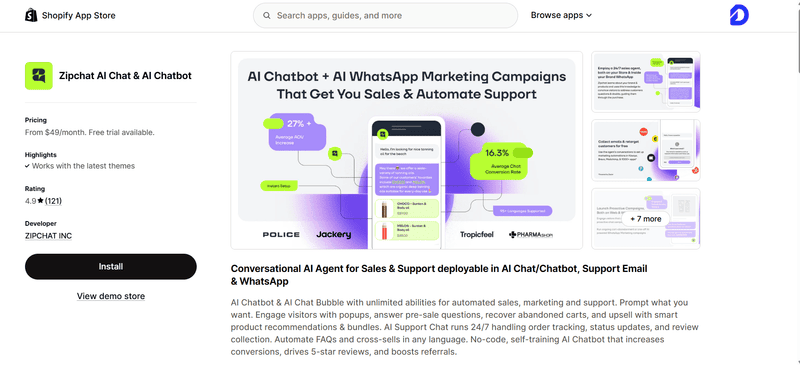
One of the greatest tricks in a salesman’s book, and one you could use on your ecommerce store as well, is to sell more to a customer than they originally intended to purchase.
This trick is called upselling and is an effective way to boost customer value. Let’s delve into the art of upselling, as we introduce you to what upselling is, and discover 10 upselling techniques that are guaranteed to increase your business revenue.
What is upselling?
In simple terms, upselling refers to the act of convincing a customer to buy products or services that are of higher value than what they originally intended to buy. This is usually done by selling them an upgraded or more expensive version of what they wanted.
Keep in mind though that upselling does not mean selling your customer accessories or related products. For example, if a customer wanted to buy a 35” TV from you, you wouldn’t be upselling if you sold them a soundbar with it.
However, it would be upselling if you sold him a 50” TV instead since it is a bigger, better and more expensive version of what they originally wanted.
Here is some data to throw more light on why learning to upsell is crucial for your business.
You can increase your revenue by as much as 30% through upselling.
Once you’ve successfully learned upselling techniques, you can drive 75% to 90% of your revenue through only upselling.
Upselling helps you understand customer preferences better as well, and as a result, increases the customer’s lifetime value.
Upselling Vs. Cross-selling
People often confuse upselling with cross-selling. However, the two do have distinct differences.
Let’s take a look at what these differences are.
10 hot upselling techniques for you to implement
1. Capture newfound customers post-purchase
A customer who has already done business with your brand is a great opportunity for you to upsell.
Since you already know what the customer bought from you, and have their contact information, use the opportunity to take a proactive approach to feedback.
Ask the customer how they felt about your product/service. If they are unhappy with their experience, it is an opportunity for you to remediate that and salvage your relationship with them.
However, if the customer is a happy one, it provides you with the perfect opportunity to start talking to them about a possible upgrade.
We at Dyrect can help you get that all-important first-party data for you to start communicating with your customers, even if you are selling your products on a third-party e-commerce platform such as Amazon or buyers from offline-retail.
We enable this by providing your customer with a seamless and delightful post-purchase omnichannel experience. Use Dyrect to drive super-fast warranty adoptions, build customer reward programs and more.
Book a demo with our team today to find out more about how Dyrect can help you build quality post-sales customer experiences in record time and increase your customers’ lifetime value.
2. Maintain a maximum price margin
A key factor to consider when deciding how to upsell is to maintain a maximum price margin. This means keeping in mind how much you want to increase your profit margin by.
The reason this is important is because if you try to upsell something that is vastly more expensive than what the customer had in mind, you’re not likely to succeed. For example, if the customer was looking at spending $300 on a TV, you’ll find it difficult to sell them a $600 one.
On the other hand, talking to them about what benefits they’d get by spending $150 more and buying a $450 TV is likely to get you a higher rate of success.
The thumb rule to follow is to limit the increase in price margin to not more than 50% of what the customer was willing to spend.
This also does not mean your upselling margin has to be 50% all the time. It could vary, just as long as you keep in mind that whatever you’re trying to upsell is still relevant to the customer’s primary need.
3. Offer relevant deals
In keeping with what we just mentioned in the point above, it is important to maintain relevance with what the customer wants to buy while trying to increase your profit margin.
Let’s illustrate this with an example. A customer who wants to buy a flat-screen TV could be convinced to purchase a home theater system instead of just a TV. However, trying to convince them to buy an expensive stand-alone audio system instead would not really be relevant.
4. Create bundles

An upselling technique that offers customers value for money while still increasing your profit margins is to offer them product bundles.
For example, when a customer wants to buy a laptop from you, you would be able to create more value for the customer by offering them an extended warranty and a laptop bag as an optional bundle along with the laptop rather than pushing the add-ons as a separate sale.
5. Make the process frictionless
The upselling process has to be one where you help the customer see the value of spending on a higher value product. If you try telling the customer to spend more simply because it gets them a better product, they’re not likely to be convinced.
On the other hand, that approach may drive away customers altogether. On the other hand, talk to the customer about how spending that extra money will benefit them. Once the customer sees the value of what you’re offering, there’s likely to be less friction that prevents them from completing the sale.
6. Build recommendations
Another effective way to upsell is to use a product recommendations gallery. This is a feature we’re sure you’ve already seen on major e-commerce websites.
For example, if a prospective customer is on your webstore browsing for smartphones, a gallery at the bottom of the page showing the latest and fastest-selling models is sure to catch their attention.
More often than not, the customer is likely to browse through those options as well and end up choosing a better, more expensive model.
7. Be transparent and share price breakdowns
One of the easiest ways to convince customers that investing in a higher value product is beneficial to them is to be transparent and share price breakdowns with them.
The best way to go about doing this is to have a comparison of successive models on your webstore, along with the difference in price between each, and the additional features each upgrade gets the customers.
A great example of this can be seen on Spotify, where every subscriber gets to see what they’re missing out on if they choose to not subscribe to a premium account.
An additional feature that is bound to help you upsell more easily, especially if you’re offering a product instead of a service, is to add images of these upgrades along with the features.
The images help customers visualize how these upgrades will enhance their experience and are sure to help close the deal more easily.
8. Leverage social proof

At least 95% of all customers look at peer reviews before they purchase a product or service online. Leverage this consumption of social proof to your advantage as an upselling technique.
Most people are likely to buy a product that has a higher customer rating, even if it is more expensive. Examples of this upselling technique working successfully can be seen on Amazon and other e-commerce sites.
9. Create a feeling of urgency
While offering discounts on upgrades are sure to entice customers, the offer becomes a lot more compelling when you create a sense of urgency by limiting their access to the discount to a limited time period.
For example, have you observed how fast products seem to sell out during Boxing Day or Black Friday sales? This is because people assume they wouldn’t get the products they want at those discounted prices if they missed out on capitalizing on the sales.
In fact, people often end up buying products worth a lot more than they originally intended to simply because of the frenzy created by the sale period.
10. Follow up consistently
Very often, a customer may simply look at an upgrade, or add it to their wishlist, but not follow through with the sale itself. In these cases, it’s time to employ one of the oldest upselling techniques: following up consistently.
In the case of customers who are buying from you online, this could mean push notifications, emails or maybe even the occasional phone call to nudge them to complete the sale.
Leverage the post-purchase upselling experience with Dyrect
From getting you that all-important first-party data to helping to leverage that data to create omnichannel upselling opportunities and more, Dyrect is the perfect tool for you to engage with your customers and create a pipeline of upselling opportunities.
Choose a plan that works best for your business today, and watch as Dyrect helps you build positive post-purchase experiences for your customers and create a considerable revenue stream through upselling.


